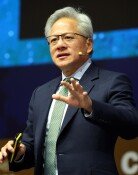Korean Products Sandwiched in U.S. Market
Korean Products Sandwiched in U.S. Market
Posted February. 12, 2008 03:02,
Korean products are being sandwiched between high quality Japanese products and cheap Chinese products in the U.S. market.
In a bid to analyze industrial competitiveness of Korea, Japan and China, the Korea Trade-Investment Promotion Agencys eight branches in the United States conducted a survey of 293 U.S. firms importing products from overseas markets. The results showed that Koreas competitiveness was weaker than that of Japan in six out of seven industries, KOTRA said Monday.
KOTRA chose seven industries based on how much share each industrys exports to the U.S. market claim in its total output and how much it will be affected by the Korea-U.S. free trade agreement. Also, it considered each industrys product quality, brand image, capability to develop new products, delivery, after-sales service, and partnership when analyzing competitiveness.
According to the survey, Koreas industrial competitiveness (assuming Japans industrial competitiveness is 100) was rated as following: general machinery 80, auto 81, chemistry 85, textile 88, electrical and electronics sector 96 and car parts 98. Koreas rubber plastic industry with 105 turned out to be the only sector which has stronger competitiveness than its Japanese counterpart. However, its competitiveness stays only slightly ahead of that of China (100).
Although all of Chinas six industries (Chinas car industry was not included in the survey) had lower competitiveness than their Korean counterparts, they had a competitive edge in price.
The amount of Koreas exports to the United States reflects the crisis faced by Korean products.
Koreas exports to the U.S. market decreased 7.8 percent from $46.16 billion in 2004 to $45.83 billion in 2006. On the other hand, Chinas exports to the U.S. market soared 46.3 percent from $196.68 billion to $287.77 billion over the same period. Also, Japans exports to the U.S. market increased 14.1 percent from $129.85 billion to $148.18 billion.
In particular, China has increased the share of capital goods and durable goods in its exports to the United States, instead of focusing on exporting labor-intensive goods based on cheap labor force, which has been deemed characteristic of Chinese export. For example, Chinas market share in the United States decreased in labor intensive goods, such as shoes (9.7%→4.8%) and clothing (13.9%→2.9%), but it increased in electrical devices (12.7%→22.6%) and machinery (3.1%→21.6%) between 1990 and 2000.
The national investment promotion agency argued that the Korea-U.S. FTA should come into effect as soon as possible, to help Korean products sandwiched between Chinese and Japanese products in the U.S. market.
For example, KOTRA projected that if the current 2.5 percent tariff on cars is scrapped, auto prices will drop by $200-500 five years after the effectuation of the trade deal, thus boosting exports by 7.3 percent. Also, if the FTA comes into effect, current tariffs on textile, which amounts up to 32 percent (sweaters), will be scrapped, thus contributing to an eight percent growth in export.
abc@donga.com







